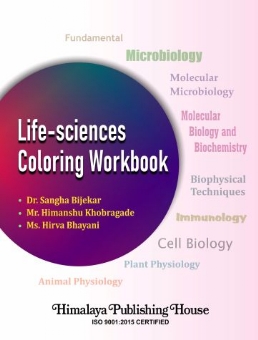Have you ever felt like picking up a paintbrush/sketch pen/crayon after seeing someone paint? Well, it is quite natural and research has shown that we are inherently attracted to colors.Research also states that coloring has many benefits for kids, teenagers and adults including encouraging mindfulness. Coloring helps to build focus and concentration. Further, it enables us to sharpen our physical and emotional state, and lastly, creativity. How can anybody miss the creative aspect of our minds that are drawn out on a canvas ever since we were kids? For most of the time, children express themselves through coloring, as they tend to understand figures and drawings much better than words. As they say, a picture speaks a 1000 words. Psychologists even go ahead and observe that coloring releases happy hormones that relax our body and improves our mood. They even go so far as to call coloring books as beneficial as yoga and meditation.
Diagrams and pictorial representations are an integral part of understanding complex and sophisticated topics. Life Sciences is one of them. Many students skip this important aspect of diagrams and head over to the theory portion. A picture is stored in the mind for a longer period of time in comparison to words. So, when students only read the theory portion, the mind only remembers words and words have a tendency to be confused between similar or like-sounding topics. This brings along with it many troubles seen during exams like not being able to label the diagram correctly, unable to recollect the theory properly, unable to write proper answers as theories tend to mix-up in the mind, and the possibility of confusion. Diagrams hold the equal importance as it helps in strengthening the answer and provides a clear picture to the reader and also fetches more marks.
When people are stressed or anxious, they can find it difficult to stay focused in the present moment. That essentially means that their thoughts are centred on their worries or to-do list instead of what’s happening right in front of them at the given time.
Being a student of Life Sciences isn’t easy as studying relies on distinct understanding of diagrams involved in the subject. It is not about just rote-learning various terminologies. One must dedicate towards developing a deep understanding of the subject matter. For that, it is pertinent that students understand and practise all the important diagrams along with their proper labelling.
By learning the diagrams, students can easily visualize their topic and retain the concepts for a longer time in their minds.
The following book is an attempt to help students with learning and remembering the key concepts in Biotechnology and Microbiology. We hope that you will have as much fun in filling it up as we did while creating it.
Contents –
1: Fundamental
2: Microbiology
3: Molecular Microbiology
4: Molecular Biology and Biochemistry
5: Biophysical Techniques
6: Immunology
7: Cell Biology
8: Plant Physiology
9: Animal Physiology


